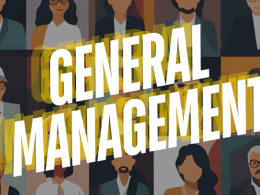How do employees reach their full potential within an organization?
What’s the secret sauce that propels individuals and teams toward excellence? Is it solely driven by talent and effort, or is there something more?
The answer lies in the power of feedback—a force that has the potential to transform not only how employees perceive their roles but also how they contribute to the overall success of an organization.
The Feedback Dilemma
Imagine working tirelessly on a project, pouring your heart and soul into it, and then submitting it without ever receiving a word of feedback.
- Would you know if you were on the right track?
- Would you understand how to improve and excel in your role?
Feedback is the missing piece of the puzzle that bridges the gap between effort and excellence.
Why is Feedback So Critical?

1. Clarity of Expectations
Employees need a clear understanding of what is expected of them in their roles. Without feedback, they may not know if they are meeting their job requirements or if they need to make adjustments.
Feedback provides specific information about performance, highlighting areas where employees are excelling and areas that may require improvement. This clarity sets performance standards and goals, ensuring that employees understand what is expected of them.
2. Motivation and Morale
Motivated and satisfied employees tend to be more productive, engaged, and committed to their work. Low morale can lead to decreased performance and job dissatisfaction.
Constructive feedback acknowledges employees’ efforts and achievements. It validates their contributions and reinforces their value within the organization. When employees feel recognized and appreciated, their motivation and morale receive a significant boost, leading to better job satisfaction and performance.
3. Continuous Improvement
In a rapidly evolving business landscape, continuous improvement is essential for staying competitive. Employees who are stagnant in their roles may not contribute to the growth and innovation of the organization.
Feedback is a catalyst for continuous improvement. By identifying areas where employees can enhance their skills or approaches, it encourages them to strive for excellence. It helps individuals recognize their strengths and areas for growth, leading to ongoing development and progress.
4. Skill Enhancement
In many industries, skills become outdated quickly. To remain effective in their roles, employees must continuously develop and enhance their skills.
Feedback is a valuable tool for identifying skill gaps. When employees receive feedback about their performance, it often includes insights into areas where additional training or skill development is necessary. This enables employees to take targeted steps to enhance their skills and knowledge.
5. Enhanced Communication
Effective communication is the foundation of collaboration, teamwork, and a positive work environment. Poor communication can lead to misunderstandings, conflicts, and reduced productivity.
Feedback fosters open and transparent communication within teams and between employees and leadership. When feedback is encouraged, employees are more likely to express their thoughts, concerns, and ideas. This enhances overall communication within the organization, leading to better collaboration and problem-solving.
The Feedback Continuum
The “Feedback Continuum” refers to the idea that feedback is not a one-off event but an ongoing process that should be integrated into the culture of an organization throughout various stages of employee development.

Let’s explore each stage and how feedback plays a pivotal role:
1. Onboarding and Orientation
How can organizations ensure new hires get off to a great start?
Organizations can ensure a great start for new hires by providing clear expectations, goals, and support during the onboarding process.
What role does feedback play in helping new employees understand their roles and responsibilities?
Feedback during onboarding helps new employees grasp their job requirements, performance expectations, and areas where they may need to adjust or improve.
2. Regular Performance Evaluations
How can regular feedback sessions lead to better performance outcomes?
Regular performance evaluations with constructive feedback provide employees with a consistent understanding of their strengths and areas for improvement. This, in turn, helps them set goals and improve their performance.
What techniques can managers use to provide constructive feedback that inspires growth?
Managers can use techniques like the “feedback sandwich,” where constructive feedback is sandwiched between positive feedback and clear guidance on improvement.
3. Skill Development and Training
How can feedback identify skill gaps and the need for training programs?
Feedback can reveal areas where employees may lack specific skills or knowledge. This information informs the development of targeted training programs to address those gaps.
What’s the significance of ongoing feedback for skill enhancement?
Ongoing feedback is essential for employees to track their progress in skill development. It ensures that training efforts are effective and that employees are continuously improving their capabilities.
4. Recognition and Appreciation
How does positive feedback impact employee motivation and job satisfaction?
Positive feedback recognizes and appreciates employees’ efforts and contributions. It boosts their motivation, increases job satisfaction, and encourages them to continue performing at a high level.
What strategies can organizations use to recognize and appreciate employee contributions?
Strategies include regular recognition programs, peer-to-peer recognition, awards, and public acknowledgment of achievements.
5. Conflict Resolution and Improvement Plans
How can feedback address conflicts and challenges in the workplace?
Feedback provides a platform for discussing and resolving conflicts. It allows parties involved to express their concerns, seek solutions, and understand one another’s perspectives.
What’s the role of feedback in creating improvement plans for struggling employees?
Feedback helps identify areas where employees may be struggling and where improvement is needed. Constructive feedback is the foundation for creating tailored improvement plans that support their growth and development.
The Feedback Ecosystem
Constructive feedback is not a one-way process but rather a dynamic ecosystem within an organization. It involves communication not only from supervisors to employees but also from employees to supervisors and among peers.
This comprehensive exchange of feedback at various levels creates an ecosystem that fosters growth, collaboration, and continuous improvement.
Tips for Creating a Feedback-Rich Culture
1. Encourage Open Communication
To establish a feedback-rich culture, organizations should create an environment where employees feel comfortable both giving and receiving feedback. Open communication channels empower individuals to voice their thoughts, concerns, and ideas without fear of repercussions.
2. Provide Training
Training managers and employees on effective feedback techniques is essential. It ensures that feedback is delivered constructively and received positively, making the feedback process more productive and less intimidating.
3. Recognize Efforts
Acknowledging and appreciating constructive feedback and its impact on the organization is vital. Recognizing and rewarding those who actively participate in the feedback ecosystem encourages others to engage and contribute.
4. Embrace Technology
Utilizing feedback tools and software can streamline the feedback process, making it more efficient and accessible. These tools can facilitate anonymous feedback, regular check-ins, and data collection for analysis.
5. Regular Check-ins
Establishing regular feedback sessions ensures that communication remains ongoing. It prevents feedback from becoming sporadic or relegated to annual performance reviews. Regular check-ins help address issues promptly and keep employees engaged.
The Future of Employee Development
Feedback isn’t merely a tool for improvement; it’s the foundation of employee development. In a dynamic and competitive business landscape, feedback serves as the compass that guides individuals and teams toward their full potential.

Here’s what the future of employee development entails:
- Continuous Growth: Feedback encourages individuals to continuously grow, adapt, and refine their skills and capabilities.
- Excellence and Innovation: A feedback-rich culture fosters a commitment to excellence and the freedom to innovate, driving organizations forward.
- Alignment: Feedback ensures that employees are aligned with the organization’s goals and values, contributing to its overall success.
In the grand tapestry of employee development, feedback isn’t a mere thread; it’s the vibrant color that breathes life into the entire picture. It’s the catalyst that transforms work into a thriving career.
As we wrap up this exploration of the crucial role feedback plays in employee development, we invite you to take a significant step in your career journey.
Join Accredian’s Executive Program in General Management, offered in collaboration with XLRI, New Delhi. This program is your gateway to unlocking your leadership potential, enhancing your management skills, and driving your career to new heights.
Don’t miss this opportunity to invest in your professional growth.
 Pin
PinEnroll today and embark on a path that leads to leadership excellence.






